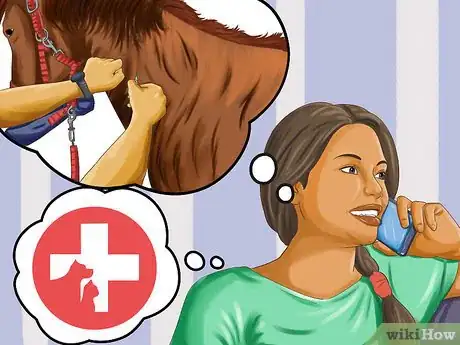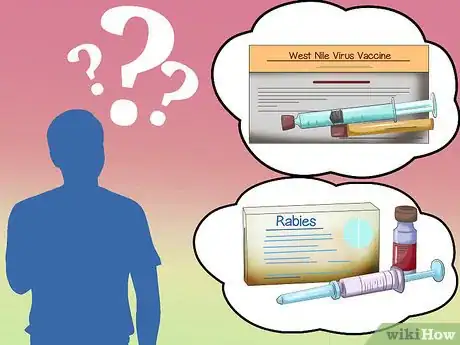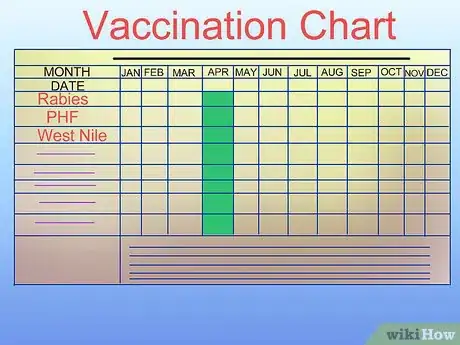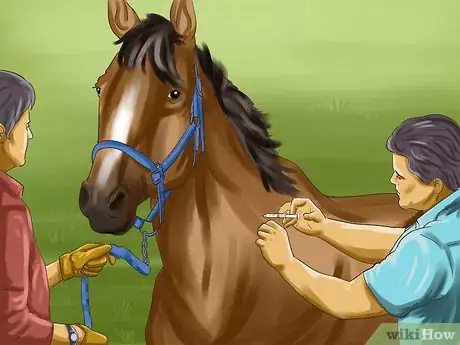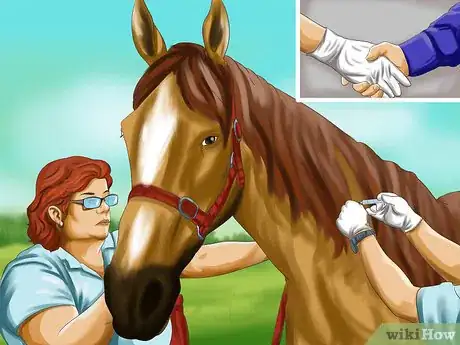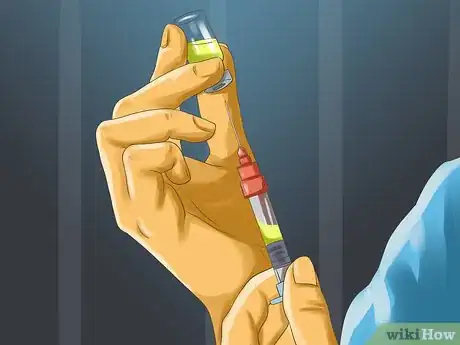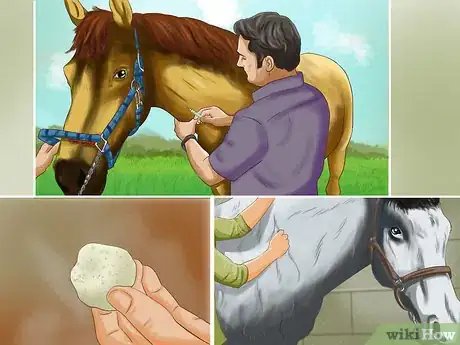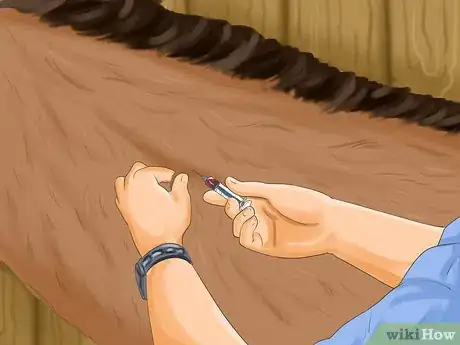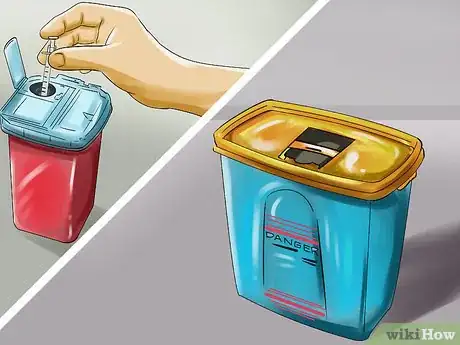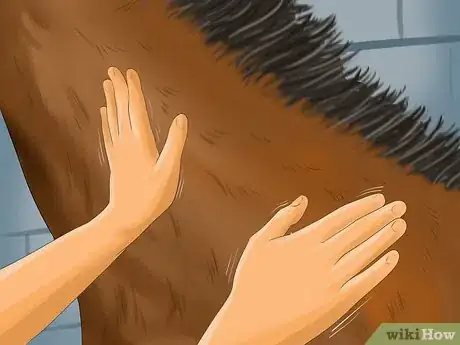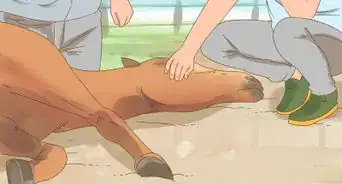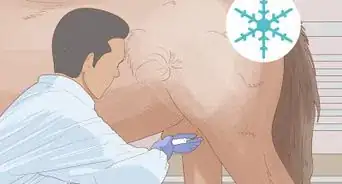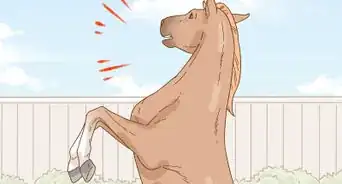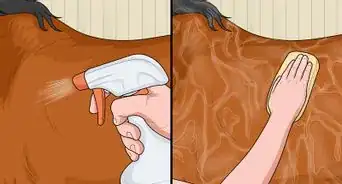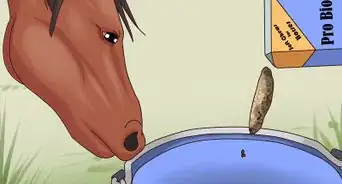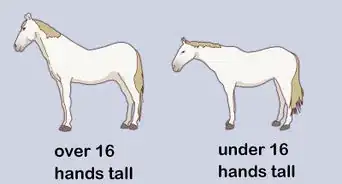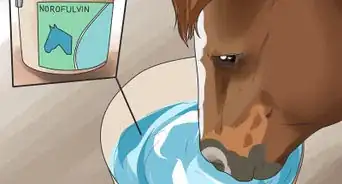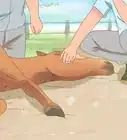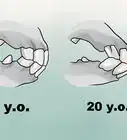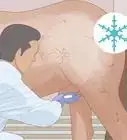This article was co-authored by Ryan Corrigan, LVT, VTS-EVN. Ryan Corrigan is a Licensed Veterinary Technician in California. She received her Bachelor of Science in Veterinary Technology from Purdue University in 2010. She is also a Member of the Academy of Equine Veterinary Nursing Technicians since 2011.
There are 9 references cited in this article, which can be found at the bottom of the page.
This article has been viewed 18,306 times.
Every horse should be vaccinated so that it does not get any communicable diseases.[1] Common illnesses that vaccinations can prevent include tetanus, sleeping sickness, influenza, rhino pneumonitis, and West Nile virus.[2] You can administer the shots for these diseases if you learn about the vaccinations that need to be given, including when and how each vaccination should be given. You also need to learn how to do an injection properly. With a lot of instruction and care, you can vaccinate your own horse at home.
Steps
Setting Up the Vaccination
-
1Discuss vaccinations with a veterinarian. A veterinarian should have a good understanding of what diseases are common in horses in your area, whether the horse's health history and vaccination history should impact its vaccinations, and how much and when vaccines should be given in order to prevent common diseases.[3]
- This discussion can occur over the phone or over email if your horse does not need a veterinary exam.
- You can also just make an appointment for the veterinarian to give your horse its vaccinations. However, this will cost you more money than doing it yourself.
-
2Decide what vaccinations are needed. There are core vaccines, which all horses should get, and at-risk vaccines, which are usually used only if your horse is in a region where the disease is active. Even if a veterinarian suggests a variety of vaccinations, it is up to you to make the final decision. Balance your veterinarian's expertise with your desires and your financial ability to pay for vaccinations. Remember that the Rabies vaccine is usually required by law in most states.Advertisement
-
3Figure out when to give vaccinations. The vaccinations a horse needs should be given at very specific times in order for them to be effective and in order to avoid negative side effects. Follow your veterinarian's suggestions for when to give specific vaccinations or follow a vaccination schedule supplied by an organization that you trust.[6]
- Different vaccinations will need to be given at different times and some vaccinations need repeated doses. This means that you will likely need to give your foal many shots in the first couple months of its life.
- For example, the rabies vaccine should be given annually, tetanus should be done annually but also right after an injury occurs, and the West Nile virus vaccine should be given in the spring.
- Many of the vaccines against mosquito-borne diseases need to be given prior to the start of mosquito season and twice a year to be effective. Administering vaccines late leaves your horse at risk of getting ill.
-
4Gather supplies and the vaccine. If you are doing the vaccinations yourself, you will need to get the vaccine from a veterinarian or a veterinary supplier. You will also need supplies like a syringe and cleaning supplies to keep the needle and the injection point clean.
- A new needle should be used for every injection. Keep this in mind when ordering supplies.
- Do your best to return the used needles back to the veterinarian for proper disposal.
Administering the Vaccine
-
1Get training from an experienced person. You should not inject a vaccination into a foal or adult horse with no training or experience. Find someone who knows how to do it and get them to help you through the process.
- If you have never given your horse a shot before, consider hiring a veterinarian the first time and watching how they do it.
- Remember that the health of your horse is important and doing intramuscular injections incorrectly can be dangerous for it.
-
2Recruit someone to help you. Even if you know how to do the injection, you will need another set of hands to help. While you are injecting the vaccination into the horse, you will need someone to help keep it steady.
- Ideally, you will have someone that the horse is comfortable with to help you with the process. This way, the horse is more likely to remain calm.
-
3Fill the syringe. Before you give the shot, you will need to put the vaccine into the syringe. Take the cap off the needle and place it into the rubber stopper on the vaccine bottle. Turn the bottle upside down and draw the vaccine into the syringe by pulling on the plunger of the syringe. Next push on the plunger a bit to get all of the air out of the syringe.
- Lastly, pull the needle out of the bottle. Tap on the syringe while you hold it needle-side up. This will loosen any air bubbles stuck inside. Then gently compress the plunger on the syringe to get rid of those air bubbles.
- When filling the syringe, draw in a little bit more than you are planning on injecting. This will allow you to push a little (along with any air) out of the syringe while not losing the right dosage of medication.
- It is very important that you make sure that there are no air bubbles in the syringe before you inject it into the horse.
-
4Prepare the injection site. You can inject the vaccine into the horse's neck or into the muscles below the tail. The neck is most commonly used and is best if only giving a few shots. Once you have decided where to give the shot, you will need to clean the injection area.
- Cleaning the injection site can be done simply by removing all dirt and debris and then rubbing the area with a cotton ball covered in rubbing alcohol.
-
5Inject the vaccine. You will need to do an intramuscular injection. This type of injection goes into the muscle mass of the horse. It is done by slowly and steadily plunging the needle into the muscle and then compressing the plunger of the syringe slowly.
- Tap on the injection site with your finger before you insert the needle. This will get the animal used to the feeling of the shot and will lessen its reaction.
- You can also pinch above the site you will be injecting to get the animal used to the sensation, then insert the needle into the skin below.
- A quick insertion of the needle is less painful for the animal than a slow one, but use care. You should not stab the animal with force.
Providing After-Care
-
1Dispose of the needle and dirty supplies. Once you have injected the vaccine, you will need to pull out the needle and dispose of it properly. A used needle should be put in a sharp instruments container. This is used so that the needle doesn't accidentally prick anyone. Any supplies that have blood or body fluids on them should also be disposed of properly, ideally in a biohazard container.
- Biohazard containers and sharp instrument containers are available online or through you local medical supply company.
- To find out where you can dispose of your sharp instruments container when it is full, contact your local waste disposal agency.[7]
-
2Care for the horse. After a vaccination you should care for the injection site and you should also take it easy on the horse. A horse that has received an intramuscular injection is likely to be sore, so exercise it gently.[8]
- The injection site should be kept clean. There is no need to bandage it but don't allow it to get filthy dirty.
- Often, injections in the neck will be sore for a few days afterwards. The horse may have trouble bending its neck. Don’t ride the horse. Simply let it rest.
-
3Look for bad reactions. After you give your horse a vaccination, you should keep an eye on the horse for a day or two afterwards to look for a bad reaction. Look for swelling or irritation around the injection site, as well as the general signs of illness. If a horse is lethargic or has a lack of appetite right after getting vaccinated, you should contact your veterinarian.[9]
- Keep an extra close eye on a horse that is getting a vaccine for the first time. This is when adverse reactions are likely to occur.
- Take your horse’s temperature twice a day for a few days after a vaccine if you are concerned about them having an adverse reaction.
Expert Q&A
-
QuestionWhat kind of shots do horses need?
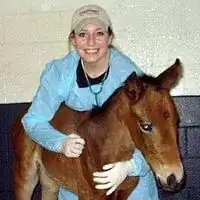 Ryan Corrigan, LVT, VTS-EVNRyan Corrigan is a Licensed Veterinary Technician in California. She received her Bachelor of Science in Veterinary Technology from Purdue University in 2010. She is also a Member of the Academy of Equine Veterinary Nursing Technicians since 2011.
Ryan Corrigan, LVT, VTS-EVNRyan Corrigan is a Licensed Veterinary Technician in California. She received her Bachelor of Science in Veterinary Technology from Purdue University in 2010. She is also a Member of the Academy of Equine Veterinary Nursing Technicians since 2011.
Licensed Veterinary Technician All horses are required to be vaccinated against rabies, eastern/western equine encephalitis, tetanus, and west nile virus. All the others are based on risk.
All horses are required to be vaccinated against rabies, eastern/western equine encephalitis, tetanus, and west nile virus. All the others are based on risk. -
QuestionHow do you give a shot to a horse?
 Ryan Corrigan, LVT, VTS-EVNRyan Corrigan is a Licensed Veterinary Technician in California. She received her Bachelor of Science in Veterinary Technology from Purdue University in 2010. She is also a Member of the Academy of Equine Veterinary Nursing Technicians since 2011.
Ryan Corrigan, LVT, VTS-EVNRyan Corrigan is a Licensed Veterinary Technician in California. She received her Bachelor of Science in Veterinary Technology from Purdue University in 2010. She is also a Member of the Academy of Equine Veterinary Nursing Technicians since 2011.
Licensed Veterinary Technician An intramuscular shot is usually given in the neck or the flank. An intravenous shot is given in the jugular vein.
An intramuscular shot is usually given in the neck or the flank. An intravenous shot is given in the jugular vein. -
QuestionWhat is in the 5 way vaccine for horses?
 Ryan Corrigan, LVT, VTS-EVNRyan Corrigan is a Licensed Veterinary Technician in California. She received her Bachelor of Science in Veterinary Technology from Purdue University in 2010. She is also a Member of the Academy of Equine Veterinary Nursing Technicians since 2011.
Ryan Corrigan, LVT, VTS-EVNRyan Corrigan is a Licensed Veterinary Technician in California. She received her Bachelor of Science in Veterinary Technology from Purdue University in 2010. She is also a Member of the Academy of Equine Veterinary Nursing Technicians since 2011.
Licensed Veterinary Technician It depends on the manufacturer but many 5 way vaccines contain: Influenza, Rhinopneumonitis, Eastern/Western Encephalitis, and West Nile Virus.
It depends on the manufacturer but many 5 way vaccines contain: Influenza, Rhinopneumonitis, Eastern/Western Encephalitis, and West Nile Virus.
References
- ↑ http://www.aaep.org/-i-158.html?osCsid=ak3tibm72ftrhatpti172g7ud6
- ↑ http://www.drsfostersmith.com/pic/article.cfm?aid=1553
- ↑ http://www.aaep.org/custdocs/adultvaccinationchart.pdf
- ↑ http://www.aaep.org/info/core-vaccination-guidelines
- ↑ http://www.equinediseasecc.org/vaccination.aspx
- ↑ http://www.animalagriculture.org/resources/Documents/Conf%20-%20Symp/Symposiums/2016%20Equine/EDF%20Resources/General%20Inf%20Deisease/AAEPFoalVaccinationChart.pdf
- ↑ http://www.fda.gov/downloads/MedicalDevices/ProductsandMedicalProcedures/HomeHealthandConsumer/ConsumerProducts/Sharps/UCM278782.pdf
- ↑ http://equusmagazine.com/article/exercise-after-vaccinations-how-soon-is-too-soon-8589
- ↑ http://www.thehorse.com/articles/16770/injection-objection-adverse-vaccine-reactions
About This Article
Before you vaccinate your horse, discuss with your veterinarian which vaccinations it needs and when it will need them. When it's time for you to vaccinate your horse, find someone experienced to guide you through the process if you are not trained. They will also serve as an extra set of hands to help keep your horse steady, while you fill the syringe with the vaccine. Start by wiping down your horse's neck with a cotton ball soaked with rubbing alcohol, so the injection site is clean. Then, slowly and steadily insert the needle into your horse's muscle mass and inject the vaccine. For more advice from our Veterinary co-author, like how to care for your horse after you vaccinate it, read on!
